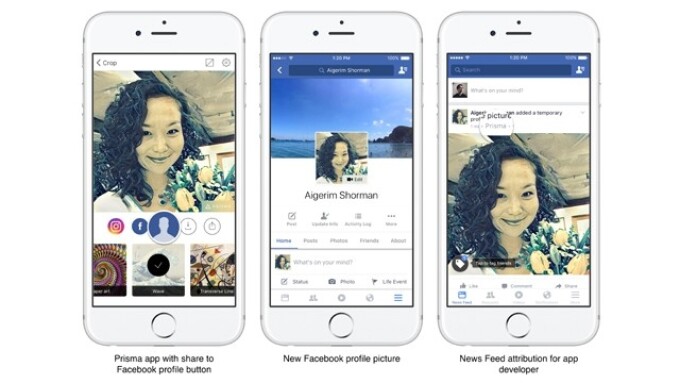LOS ANGELES — It is an ongoing issue for businesses of all sizes and all market segments: how do you grow beyond your expertise and assets?
With sufficient assets, you can acquire expertise, but unlimited expertise requires unlimited assets — and if you can summon those, you should just retire...
Entrepreneurs are all too familiar with the problem, with many learning the hard way that starting a company is different than running one — whether you are a chef who opens a restaurant, a website owner who hits it big, or a social network that is looking beyond its corporate confines to help identify “the next big thing.”
Take today’s example from Facebook, with the company’s announcement that it is now releasing to all Android and iOS developers its Profile Expression Kit, which allows Facebook users to add photos and videos created in third-party apps directly on their Facebook profiles.
This is important for the company (and its users) because Profiles are second only to the News Feed as Facebook’s most visited surface. Allowing folks to use Boomerang GIFs, Flixel cinemagraphs, Lollicam stickers, Vine videos, and more as their profile picture will only boost this interest and engagement, with app publishers receiving exposure in the News Feed when the new profile picture is announced — reportedly among Facebook’s most popular stories.
“We’ve designed the Profile Expression Kit so people can create fun and personality-infused Facebook profile pictures and videos in the apps they are already using to create and edit photos and videos,” says Facebook’s Aigerim Shorman. “App developers enjoy attribution and brand awareness within News Feed every time someone uploads a profile picture or video created by their app.”
The specifics of the new service aside, it is an indicator of Facebook growing beyond its expertise, even if not necessarily its assets, yet still seeking to grow.
“Facebook sees 30 million updates to profiles each day, but it can’t build every tool to keep your photos and videos interesting,” Josh Constine wrote for TechCrunch. “Working with the Profile Expression Kit could get apps a ton of exposure, which is critical considering how crowded the app stores are and how expensive app install ads have become.”
Constine says that Facebook has often relied on developers to provide more customized experiences it couldn’t code by itself.
“Facebook doesn’t have to pay developers to build this stuff. Instead, it just dangles its greatest resource — users. Developers are desperate for traction, and will make Facebook more dynamic if it gets them downloads,” Constine explains. “By crowdsourcing fun ways to show off your face, it could lure in [users] with more creativity tools than any one company could build itself.”
Apps must be submitted to be reviewed for compliance with the Profile Expression Kit Platform Policy, with Shorman saying that Facebook is focusing on apps “that have the primary purpose of creating and editing photos or videos; that encourage people to take selfie photos and videos with the front-facing camera; [and] that do not include ads or commercial content, such as logos and watermarks, in photos and videos.”
Those guidelines are not only the gateway to the service, but outline the demands of today’s tech-savvy consumer audience — where advertising is perceived as evil, self-glorification via selfie is an addiction, and media creation and sharing is encouraged — key concepts for all media marketers to understand, even those serving adult markets.
One notable example from the adult space is popular live cam company Chaturbate, which opened up its platform to developers; allowing them to create custom widgets that individual performers could add to their own chat room as a way of personalizing the user experience — a vital factor in the cam market.
The broad range of resulting widgets may have been within the reach of the company to produce, but would it have thought of every “desired” feature as expressed in this widget collection? It’s doubtful — two heads are better than one, and two hundred heads even more so. The market insights that such contributed creativity reveals are invaluable, and should more than justify any expense in testing apps and widgets for compatibility and compliance.
Sometimes, companies can benefit by sharing a vision, not just technology. For example, longtime XBIZ fans may remember the community graphic contests, where the industry’s top artists produced themed wallpapers in a congenial competition. This showcase of high-end design highlighted trends and put on display some of the best work these artists produced — and was a learning experience for all.
While professional merchants have long surveyed their users and incorporated customer feedback into ongoing product development and improvement, technology allows this process to be scaled to enable companies of any size to benefit from the generosity of fans wanting to see it succeed — and in cases of commercial ventures, perhaps profit from the exchange.
For adult website owners, reaching out to visitors for ideas for improvements, new features and more, will not only build a sense of community but help them build a better site, while adult content producers can reach out to fans for scripting ideas — not just come up with their own ideas, and then wait for the sales figures to come in to see if they were right.
By looking outwards for help in their product development, today’s top companies are crowdsourcing creativity to leverage their assets — and your company can too.






